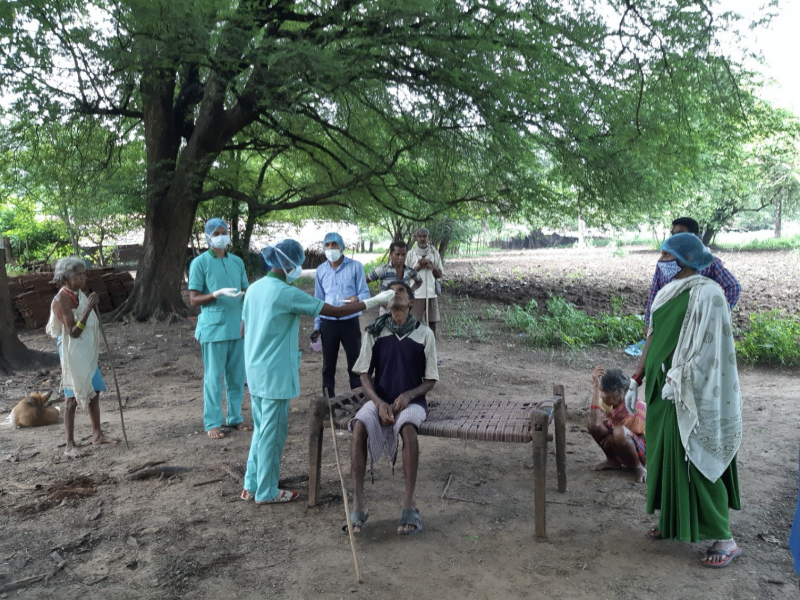
Ensuring essential health services during COVID-19 in the State of Chhattisgarh, India
March 12, 2021
In the Mangalnar village in Bijapur district, Rajeshwari and her husband Gopi conceived a child after ten years of waiting. In early April, during a strict lockdown to combat COVID-19, Rajeshwari went into premature labour. She was just 24 weeks pregnant.
Thanks to the referral network in the district, she was promptly moved to the nearest community health centre where she delivered her baby safely. However, with a birth weight of a meagre 510 grams, the tiny baby’s fight for survival had just begun. After close to three months of care in a sick newborn care unit at a district hospital and tele-mentoring from the experts at the Apex health care institute of the All India Institute of Medical Sciences in Raipur, she became the youngest preterm baby to survive in the region.
“Because of our bitter past we had almost given up hope, but thanks to the tireless efforts of the doctors and nurses, our daughter has miraculously survived,” said Rajeshwari.
The experience of successfully caring for this baby during a crisis such as COVID-19 has boosted the morale of health workers in Bijapur. After discharge, the family came back to the district hospital once for follow-up before moving to a relative’s home in Bhilai, where the baby is doing well.

From 510 grams on the fourth day of admission to 1.41 kg on the eightieth day of discharge. The story of Rajeshwari’s child’s survival has not only set a record, but the timing of setting up this record when world is going through a pandemic has been a great morale boost for health workers who supported the family.
Photo credit: District Hospital, Bijapur, Office of Chief Medical and Health Officer, Bijapur
Maintaining essential services during COVID-19
Bastar region, located in the southern part of Chhattisgarh in central India, is one of the most difficult to reach areas in the country. Six decades of violent insurgency has led to a lack of overall development. This, combined with dense forests, has made many of the areas unserviceable by health care workers. As a result, the region has some of the poorest health indicators in India, lagging behind national averages. But in recent years, the launch of the Transformation of Aspirational District Programme has helped the region make huge leaps in overall development, but the journey has just begun.
As part of its support to the state government of Chhattisgarh, WHO is providing technical expertise to the districts of Bijapur, Dantewada and Sukma in the Bastar region to support and reinforce the Health and Wellness Centre programme. This is part of WHO’s assistance, through the UHC Partnership, to support equitable access to essential health services at sub-national levels, through major reforms to strengthen local health systems including primary health care, with a focus on marginalized groups.